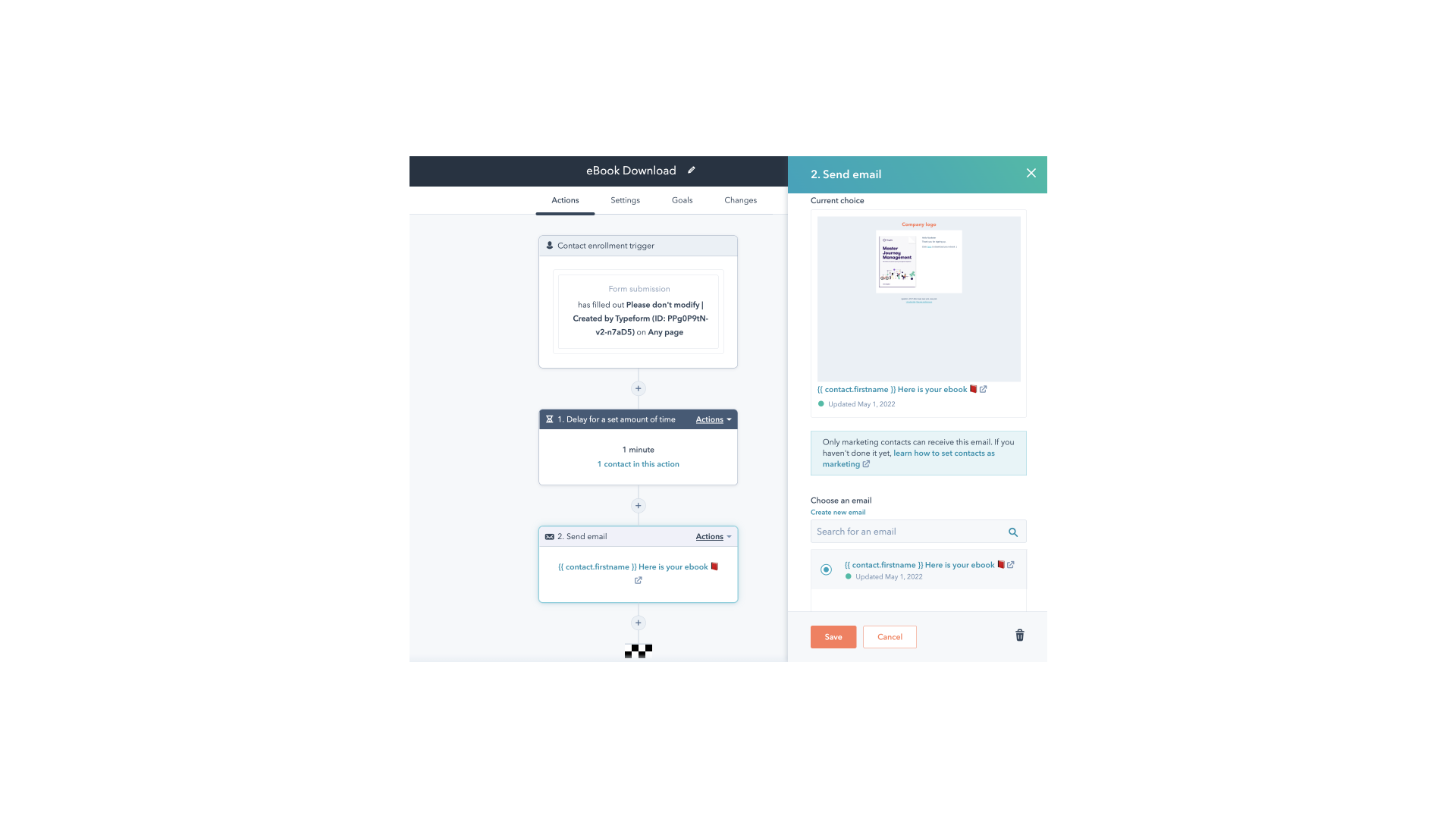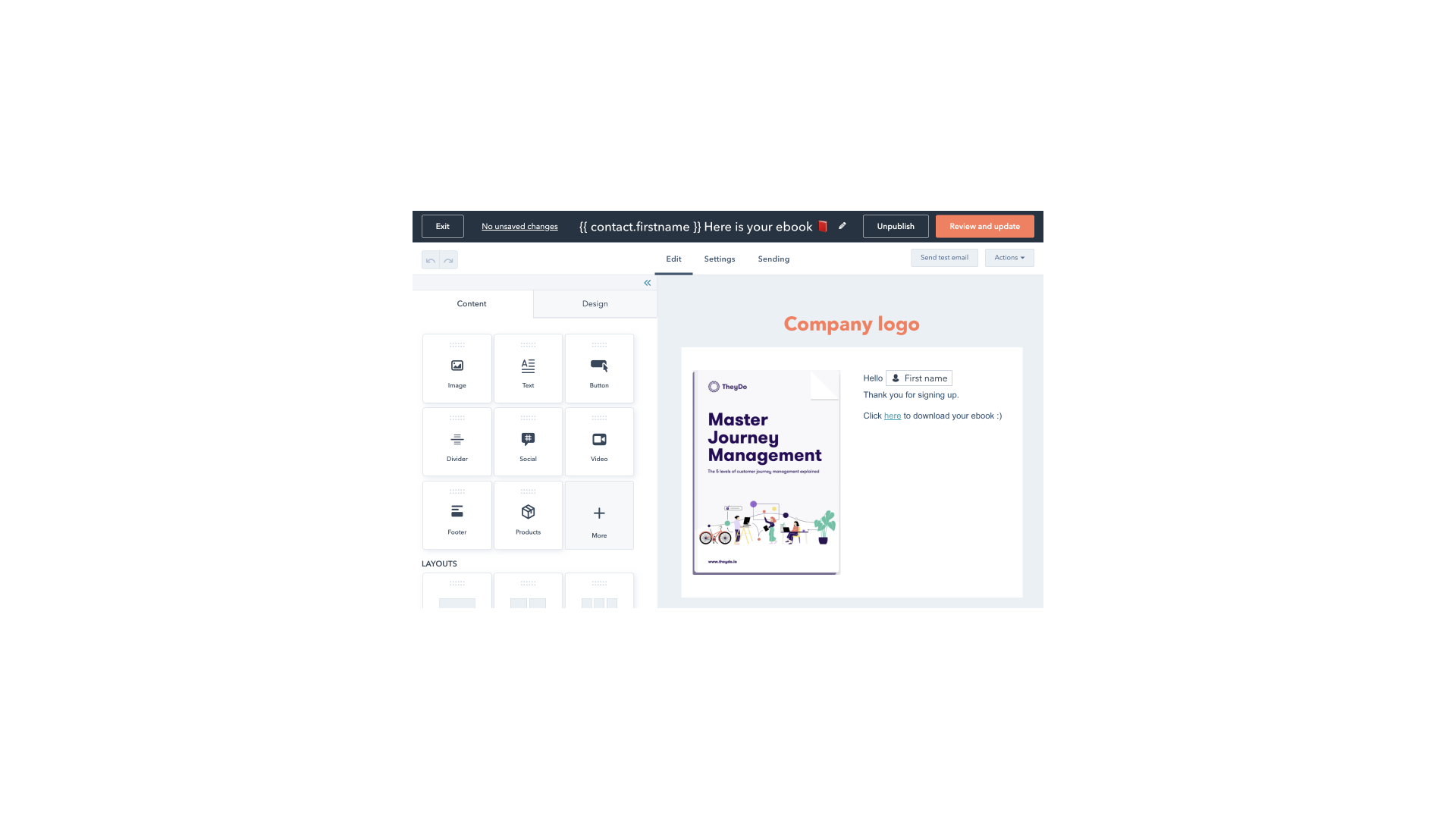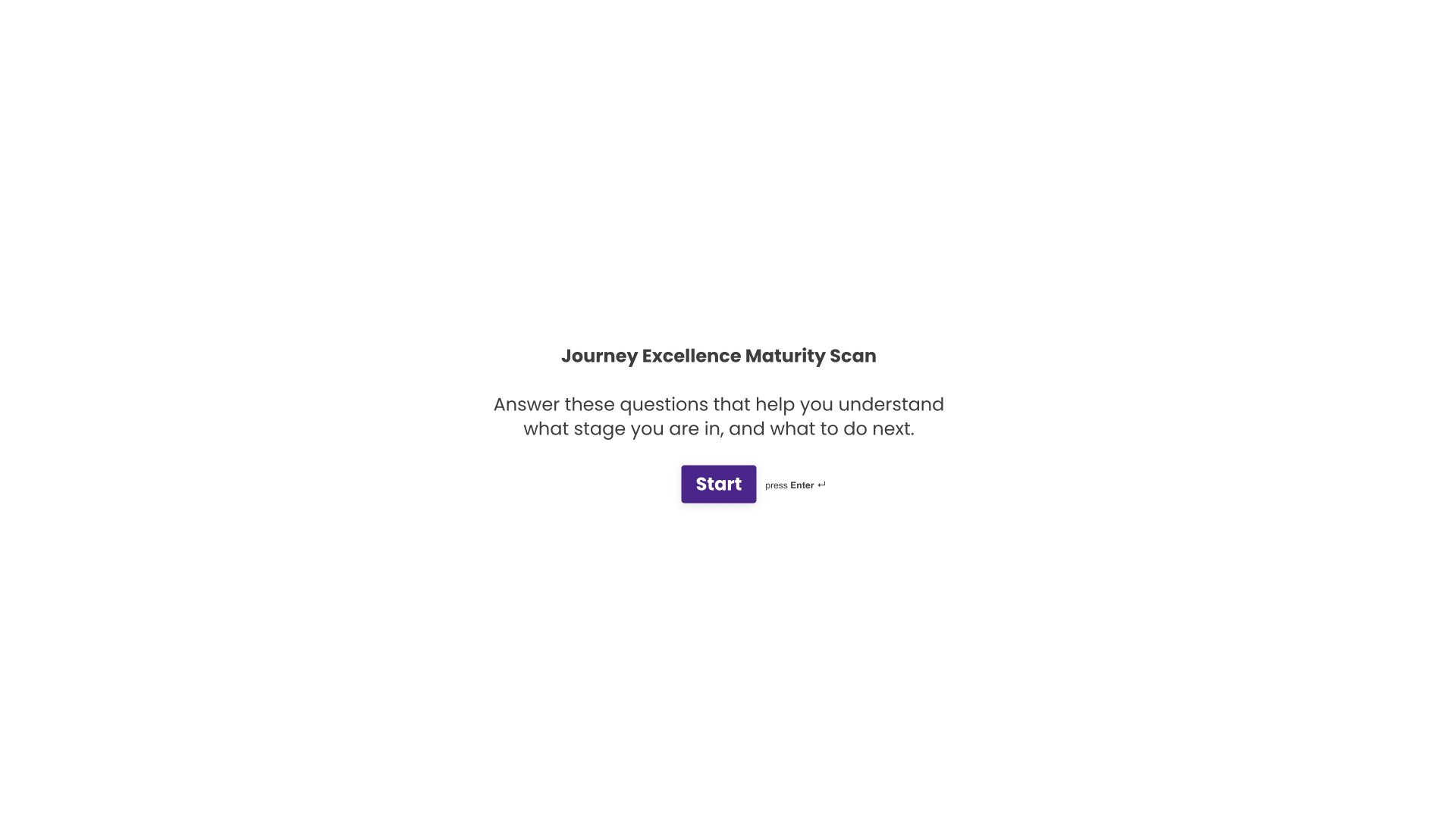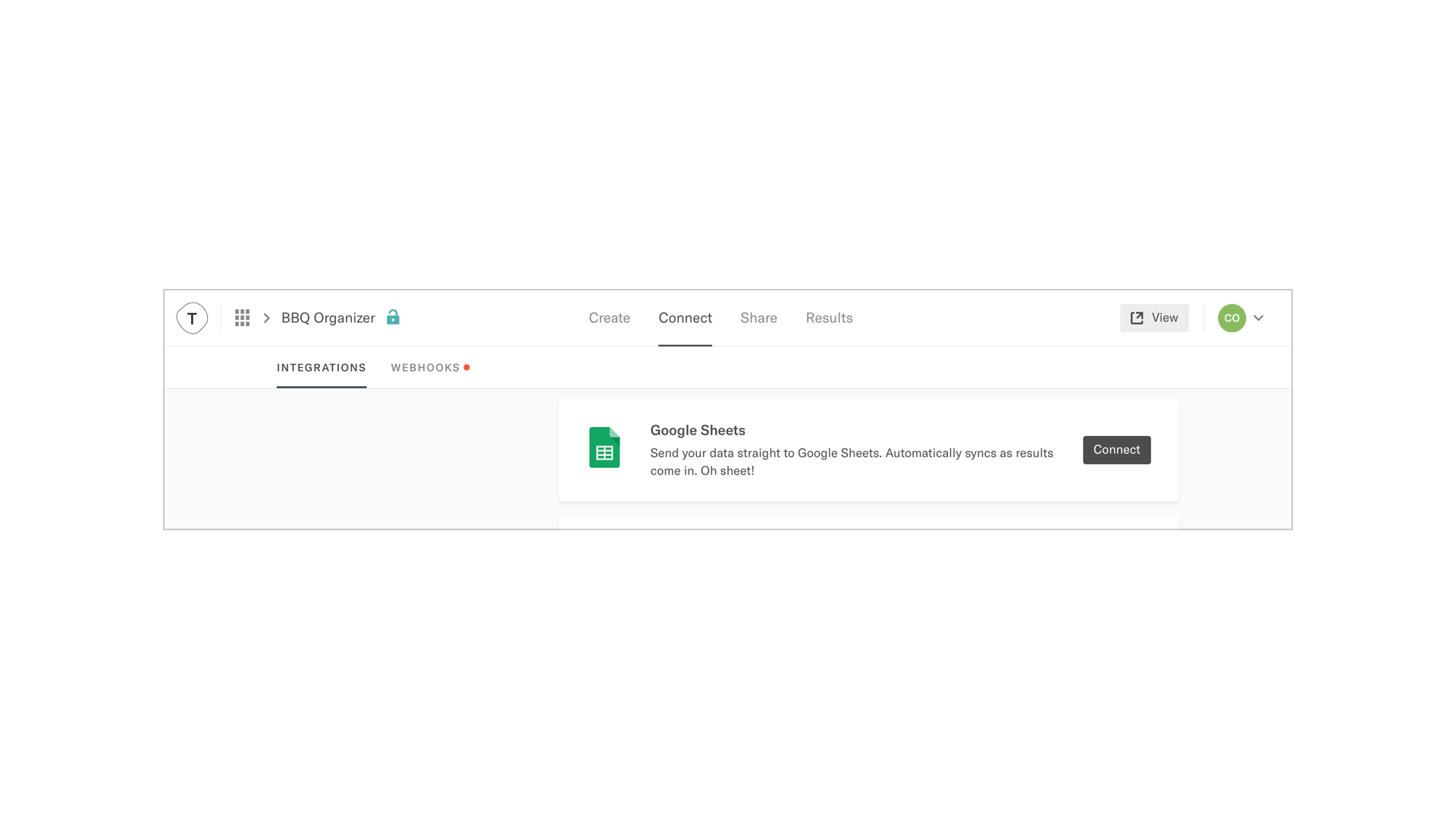Survey School 6: Integrating Typeform with your tech stack
You know what’s messy? Code-heavy software integrations. You know what’s not? Typeform integrations. Mass personalization and data wrangling just got a whoooole lot easier.<br>Learn how to play nice with even the most advanced enterprise tech stacks in our latest Survey School article.

Contents
If you’ve ever worked with a coach or a therapist, you know about active listening. It’s that incredible feeling where the other person listens attentively to what you’re saying, remembers it correctly, and reflects it back to you.
It sounds simple, but there are few things more impactful than feeling like the person you’re interacting with is truly listening to you. To compete in today’s digital marketplace, brands need to create that feeling of deep, attentive listening.
But too many brands don’t listen like a coach.
Instead, they tend to listen like a rude guy at a party. They make you repeat yourself every few minutes, and they don’t seem to remember anything you’re saying. If you' re ready to forge better relationships with leads and customers, you need to get two things right:
- Personalize your digital interactions with your prospects and leads
- Integrate your tools so that the personalized digital experience feels seamless
Without personalization, you aren’t listening politely. And without integration, you aren’t remembering what they said. In this Survey School guide, we’ll break down:
- How to integrate Typeform into your tech stack
- Integrations to increase your operational efficiency
- Examples of effective integrations you can implement today
Why Typeform is platform agnostic
Typeform isn’t just a form tool. It’s a better way of talking to your customers, leads, and colleagues every time you interact.
We know you already have a complex tech stack in place and we don’t want to get in the way. We just want to make your workflow better—more conversational, more engaging, more effective. Less work, more flow.
Typeform Connect makes it incredibly easy to build integrations with other apps. And build them we have. These days we have hundreds of pre-built integrations to the most popular business apps, including:
- Analytics & Reporting tools—Google Analytics, Airtable
- Automation tools—Zapier, Pabbly
- CMS tools—Hubspot, Contentful
- Collaboration tools—Asana, Slack
- Customer support tools—Jira, Zendesk
- Developer tool—GitHub, MySQL
- Document tools—Google Docs, Notion
- Design tools—Unsplash
- Email marketing tools—MailChimp, Omnisend
- File management tools—Dropbox, OneDrive
- Lead generation tools—Calendly, Zoho CRM, Eventbrite
- Marketing automation tools—Marketo, Buffer
- Online learning tools—Thinkific
- Payments & e-commerce tools—Stripe, Square
- Productivity tools—Evernote, monday.com
- Research and customer experience tools—Thematic, AutoAssess
- Rewards tools—appyReward, Tremendous
- Sales tools—Shopify, Salesforce
- Scheduling tools—Arrangr, Chilli Piper
No matter what your business tech stack looks like, Typeform can talk to it.
Using Typeform integrations for workflow efficiency
Something you might notice in the long list of integrations above—Typeform doesn’t just speak to marketing tools and CRMs. It’s also easy to integrate into your internal workflows, making your business run more smoothly.
Want to know how Typeform uses Typeform to run our business? Check out this list of 21 ways we use Typeform ourselves to interact with our customers and collaborate more easily.
Here are a few ways you can streamline your business operations with Typeform integrations:
1. Airtable
With our Typeform-Airtable integration, you can use your Typeform responses to populate an Airtable. (Or if you’re still old school, we also have integrations for Google Sheets—and Excel sheets, for that matter. No shade.)
This is awesome for capturing information from multiple sources in the same place, making it perfect for planning and project management.
For example, our Content team easily manages customer stories and guest post requests by using a Typeform-Airtable integration.
We use customer stories a lot here at Typeform to illustrate how our product helps our customers and to add some proof to our big audacious statements about how great we are.
Case in point: How a personality quiz is growing a beard brand
But until we added the Typeform-Airtable integration, this was a very manual process. We’d ask customers to fill in a typeform to tell us about their typeform use case, and then follow up with them via email.
Now, with the Typeform-Airtable integration, those customer stories come in through the typeform and automatically find their way to their Airtable home. Then when we follow up, we already have their basic info saved, and we can spend more time deep-diving into their story. And, when our Content team gets a request for a customer story for a specific use case, we have it tagged and easy to find via Airtable.
2. Zapier
The Typeform-Zapier integration is one of the most frequently used by our customers—and no wonder. Zapier and Typeform give you a nearly endless list of automated responses to make your business run smoother and faster.
Here are just a few of the things you can do with Zapier and Typeform:
- Trigger an automatic notification in your preferred chat app, email, or by SMS every time someone completes a specific typeform
- Save new Typeform entries as individual files in a document storage platform like Google Drive, Microsoft OneDrive, or Evernote
- Automatically convert a typeform response into a new card in Trello
3. Slack
The Typeform-Slack integration ensures your Typeform responses get in front of the right people fast.
- Automatically send new Typeform leads to a Slack account or channel so the right team can follow up. With Typeform’s scoring feature, you can rate your leads based on each person’s responses, so only the most promising leads get sent to Slack, along with all the relevant details they provided in the form.
- Recruiting? Use the scoring feature to rate the candidate applications you’ve gathered with your hiring typeform, and get the best responses to your hiring manager via Slack so they can follow up right away.
Using Typeform integrations to personalize your sales pipeline
Personalizing content for your leads and customers means reflecting information you already know about them. In terms of Typeform, you can either:
- Personalize your typeforms with information that you’ve gathered from someone as they fill in the form, like their name once they’ve given it to you (using the Recall information feature) or
- Personalize your typeforms with information you already know about the person filling it in (using the Hidden fields feature). For instance:
- Data they provided you in an earlier interaction, which was stored in your CRM (like their name and email address)
- Their geographic location
- Their previous purchases and preferences
- Outstanding customer support issues
- How they found you (the traffic source—Facebook, website, etc.)
For this second form of personalization, you need to integrate Typeform with your existing sales and marketing tools. That way, you can:
- Bring the data you need into your Typeform to make it feel conversational and customized
- Use the information you gather via Typeform to enrich your lead data with every interaction.
Here’s an example of how powerful this can be for your business.
Theydo.io: Lead Nurturing with Typeform, HubSpot, and Slack
Theydo.io is a Customer Journey Mapping SaaS Company with 50 employees. They’ve built an engaging end-to-end digital pipeline using Typeform, integrated with their existing tech stack of HubSpot and Slack:
1. They use an embedded Typeform on their website to gather email addresses from their leads (in exchange for sending over a free ebook via email).
2. They’ve created a HubSpot workflow that automatically sends over the ebook via email every time they receive a new response to their lead-gen Typeform.
Typeform then sends the responses to their HubSpot CRM. Theydo.io can personalize an email' s wording using these responses (such as adding the lead’s first name).
3. Theydo.io now sends an email that prompts them to complete a Typeform quiz.
4. Theydo.io scores the quiz responses to segment their leads into high-potential and lower-potential leads.
5. Leads that pass a certain score threshold (like that director above with a lead score of 42) are re-routed to the Sales team via Slack, so they get an immediate follow-up.
By integrating Typeform with HubSpot and Slack, theydo.io creates a conversational digital pipeline that brings in leads, stores them in their usual CRM, nurtures and enriches the information on those leads, and makes sure that the most important leads get a personalized follow-up asap.
Typeform integrations for the end-to-end customer journey
But why stop there? Here’s an example of a customer who uses Typeform to manage their entire sales pipeline, from data capture to qualification to sale.
Tiffany* (not their real name) runs a matchmaking service for young professionals—built entirely on Typeform, with some integrations to their existing tools.
Here’s what the pipeline looks like:
1. Lead Capture
Leads are invited to create a dating profile via a fun Typeform quiz embedded on Tiffany’s website. These responses are then captured in their HubSpot account so they can follow up.
2. Lead Nurturing
Tiffany invites leads who have created the dating profile to complete a more detailed matchmaking survey, so they can get to know them better.
3. Lead Qualification
While their leads are filling out the matchmaking survey, Tiffany also has them sign a contract within the Typeform itself, using the Zapier integration to connect Typeform with Docusign.
4. Sales Meetings
Once the lead has signed the contract, they can book an appointment for a 1:1 matchmaking call with Tiffany via the Calendly integration. This is Tiffany’s opportunity to show off their impressive matchmaking skills and hopefully close the sale.
5. Follow-up
Thanks to the automatic rules Tiffany has set up in HubSpot, they know they’ll never drop the ball. Every lead will get a personalized email sequence to keep them engaged with their brand and encourage them to hop on a call with them.
As you can see, Typeform isn’t only acting as a form here. It’s the portal that connects Tiffany with their customers, keeping each lead moving smoothly along the sales pipeline with conversational interactions that make it easy and enjoyable to increase the level of engagement with their business.
For more examples, check out this article on our top 10 most popular Typeform integrations.
Integration options: no-code or all-the-code
If all this talk of integrations is making you panic about coding—don’t. Typeform was originally built for people who don’t want to (or don’t have time to) code.
Adding these integrations is often as easy as choosing from a few different options in a drop-down list in the form builder.
For instance, to connect your typeform to a Google Sheet, you just click on Connect in the “Send responses to Google Sheets” box:
Or you could connect your typeform to HubSpot like this:
Or to add a Calendly connection, open your typeform from your Workspace, and then click the + icon to “Add new question.” Scroll down to the Appointments question type, and select Calendly.
Of course, if you’re a developer and want to build your own integrations—say, to your in-house customized CRM build—we got you. Typeform’s Developer Portal is a robust, open platform that lets you skip the form builder and dive right into the APIs.
You can create typeforms and retrieve submissions programmatically, deliver typeform submissions to your URL or web app of choice, or seamlessly embed your typeform with our Embed SDK. Go nuts!
Typeform goes anywhere you go
When it comes right down to it, the only limit to how you use Typeform is your own imagination.
We have customers who’ve built entire webshops just using Typeform. We have customers using it for everything from employee training to recruitment, and from customer support to lead nurturing. (We use it ourselves to plan lunch!)
To learn more about Typeform and our ecosystem of integrations, check out Typeform Connect.
Or, if you want to build an integration yourself, you can find everything you’ll need at Typeform for Developers.












